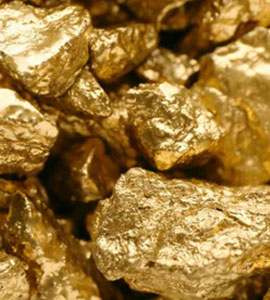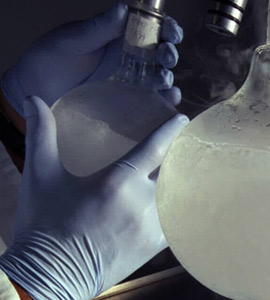Activated Carbon
What Is Activated Carbon?
Activated carbon has an enormous surface area relative to its size and a sub microscopic porous network. Through the process of adsorption, it attracts and bonds with a vast array of organic and inorganic compounds along its surface, creating a sort of film. Though it does not bond well with compounds such as alcohol or heavy metals, activated carbon can be impregnated with various chemicals to improve its effectiveness against targeted compounds.
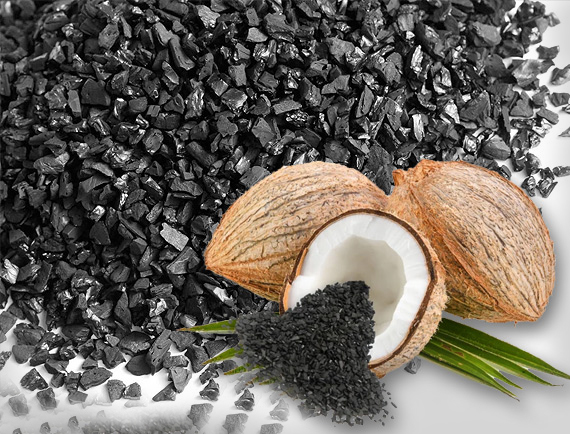
WHAT IS COCONUT SHELL ACTIVATED CARBON?
The raw material used for the manufacture of Activated Carbon is coconut shell. It is a steam-activated material, so it does not contain chemical agents that can contaminate or react with the medium where it is used. They are characterized by having a large amount of micro to mesopores (5nm-50 nm) suitable for the removal of small molecules; contains a neutral PH, can be manufactured in any particle size.
Why Choose Coconut Shell Activated Carbon?
Shell as raw material creates a porous network with uniquely sized pores. Activated carbon made from coconut shell is ideal for water filtration, as its tiny micropores match the size of most water-based contaminants.
In addition, coconuts are a renewable resource. A coconut tree can live for 100 years, and it will continue to produce coconuts until approximately 70 years of age. A mature coconut tree can produce up to 200 coconuts per year, and it is possible to get three or even four harvests per year from each tree.
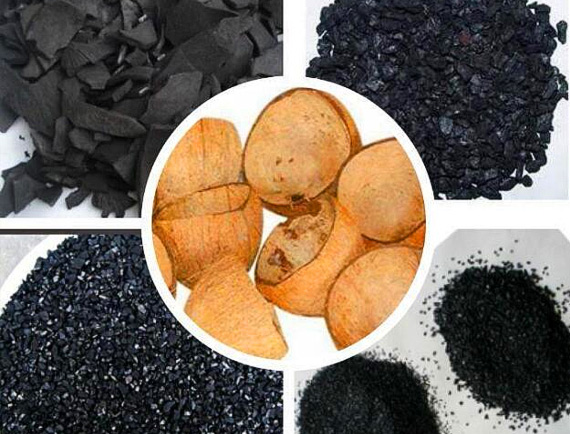
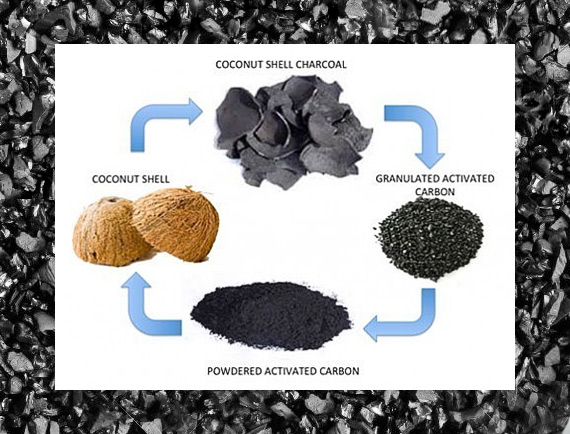
How Is Activated Carbon Made from Coconut Shells?
The naturally carbon-rich shells are slowly heated to a very high temperature in a low-oxygen environment. This removes water and impurities without allowing the shells to burn. The resulting material, known as char, is activated through a variety of chemical and/or physical processes. These activation processes vastly expand the surface area and create the porous network.
The activated carbon is then formed into the desired type: powdered, granular, or extruded. Powdered activated carbon consists of particles fine enough to pass through an 80 mesh sieve. Granular particles are a bit larger, and are available in varying sizes. Extruded activated carbon is made by mixing granular activated carbon with a binder and pushing it through a pellet machine. Each type is uniquely suited to specific applications. The activated carbon is then impregnated with one or more chemicals if desired.
Benefits of Using Coconut Charcoal
Activated carbon has a tremendous surface area relative to its size and a sub microscopic porous network. Through the process of adsorption, it attracts and bonds with a vast array of organic and inorganic compounds along its surface, creating a sort of film. Though it does not bond well with compounds such as alcohol or heavy metals, activated carbon can be impregnated with various chemicals to improve its effectiveness against targeted compounds.
• Detoxification Support
Coconut activated charcoal is used all over the globe as a suitable detoxifying agent that helps remove unwanted substances and toxins from the body. However, this does not mean you should go ahead and use it without consulting your doctor. During the process of adsorption, the charcoal's detoxifying properties are enhanced. In this reaction, positively charged toxin particles and other harmful substances bind to the negatively charged particles of porous activated charcoal. With the presence of millions of pores, coconut shell charcoal can bind a large number of toxin particles and flush them out of the body.
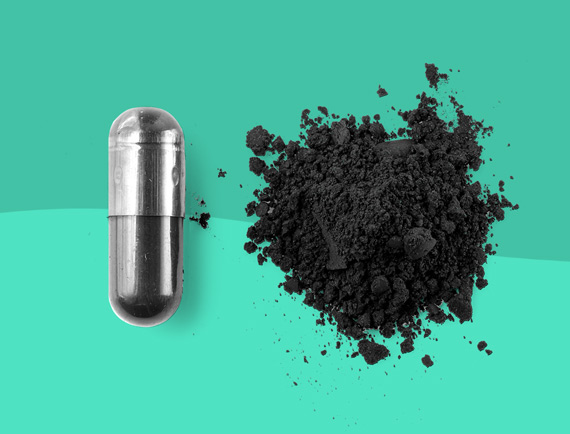
• As a Cleansing Agent
In addition to helping with detoxification, coconut activated charcoal also acts as a natural remedy for internal cleansing. Just as it binds toxins from the body using its porous form, it can also bind to bile acids and remove them from the body. Such body cleansing is necessary because if you are excreting certain toxic compounds with bile acids. Using coconut shell charcoal prevents the accumulation of these toxins, eliminating bile (and so poison) from the body. In addition to bile, it also increases the body's ability to eliminate heavy metals such as mercury or lead.
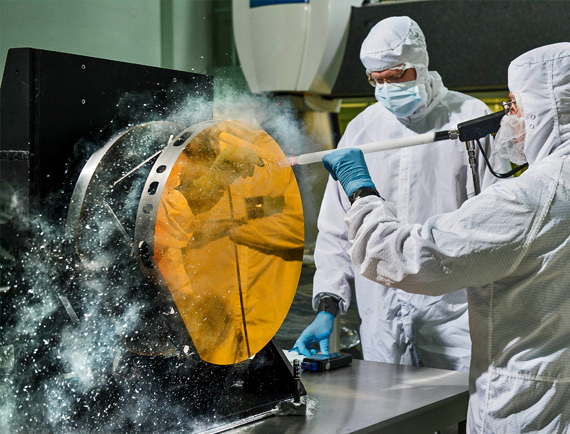
• Aid Against Bloating
One of the most popular and clinically proven benefits of coconut activated charcoal is that it's a natural remedy for flatulence and bloating. A regular dose of 500 mg taken before meals gives suitable results. Combining coconut shell charcoal with other digestive enzymes or using ginger extract gives impressive results by preventing intestinal discomfort.
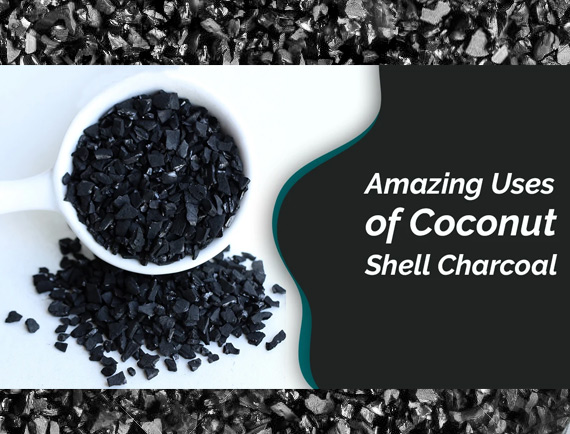
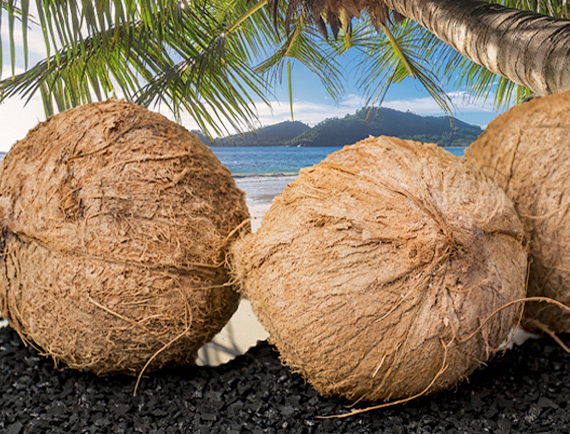
Other Uses and Benefits
Besides the above, coconut shell charcoal is also used for other applications such as:
-
+
As a fuel substitute against fuelwood, kerosene, and other fossil fuels.
-
+
Charcoal briquettes are commonly used in Middle Eastern countries to burn shisha.
-
+
Middle Eastern countries also burn fragrances at home using charcoal briquettes.
-
+
In America and Europe, charcoal briquettes are used to heat spas as well as stoves for cooking.
Applications
Activated Carbon Products
We offer a wide range of high quality of activated carbons.
Granular activated
Carbon
Granular Carbon is used for filtration and precious metal recovery.
View MoreLet us know if you have any questions about our products and services.
All rights reserved © CG Carbon 2021 | Design and Technology by Paarva


